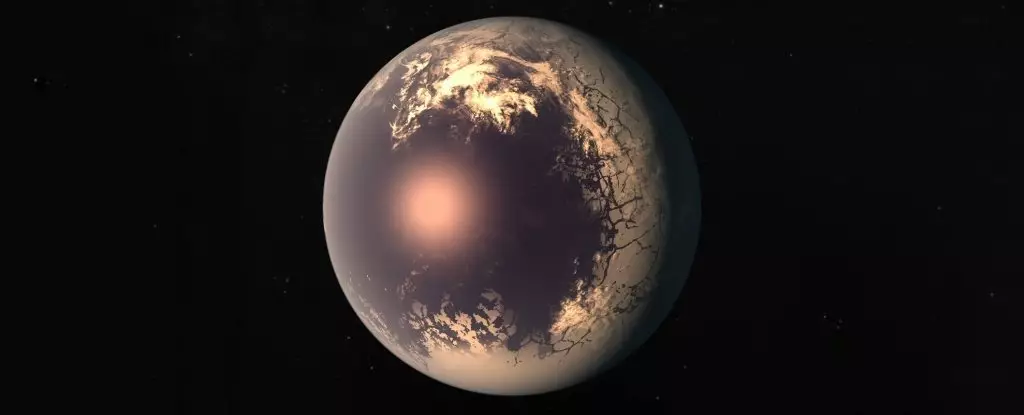Planetary enthusiasts have been captivated by various celestial bodies like hot Jupiters, mini-Neptunes, and super-Earths. However, amidst this vast array of planetary wonders lies a seemingly eerie celestial body known as the Eyeball Planet. Drawing inspiration from the name itself, this planetary oddity resembles a colossal eye observing its surroundings. Although it may sound perplexing, the appearance of these unique celestial bodies can be attributed to a fascinating phenomenon known as tidal locking.
Tidal locking occurs when a celestial body rotates at the same rate as its orbital period around another body. This synchronization results in one side of the orbiting body perpetually facing the body it orbits, while the other side remains in eternal darkness. An example of this occurs with the Moon, which is tidally locked to Earth, leaving its far side hidden from our view. In contrast to Earth’s dynamic day/night cycle due to its lack of tidal locking with the Sun, exoplanets have been discovered where this phenomenon does occur. Consequently, these planets exhibit distinct characteristics on their day and night sides due to the stark differences in the conditions they experience.
A 2013 study published in the journal Astrobiology highlighted a fascinating possibility for habitability on the day-night dividing line of an Eyeball Planet. With glaciers slowly melting and channeling water to the center, a fertile region emerges in perpetual twilight. This unique environment offers a potential haven for vegetation to flourish, defying common expectations of life only thriving under direct sunlight. Consequently, hot eyeball planets present an extraordinary opportunity to study the limits of life’s adaptability in the universe.
On the other end of the spectrum lies the icy eyeball, situated further away from its star’s heat. As with its hot counterpart, this planetary oddity possesses a night-side ice cap. However, the day side of the icy eyeball is not an arid wasteland but rather a vast liquid ocean. This intriguing feature potentially harbors a thriving ecosystem akin to Earth’s vibrant seas. While both hot and icy eyeball planets represent extreme scenarios, the vast diversity among tidally locked exoplanets suggests that each will possess distinct characteristics based on their proximity to their host star.
Astronomer Sean Raymond aptly summarized the potential variations found among tidally locked planets, stating, “Differences could come from clouds clustered in certain areas, from preferential melting of ice on the day side or freezing of ice on the night side, or from any number of other possible sources.” These differences offer astronomers a tantalizing glimpse into the range of environments that exist throughout the galaxy. As we ponder the existence of giant space eyeballs, we find ourselves contemplating the vast unknowns and limitless possibilities of our universe. What other celestial wonders could be waiting to be discovered? Only time will tell.


Leave a Reply